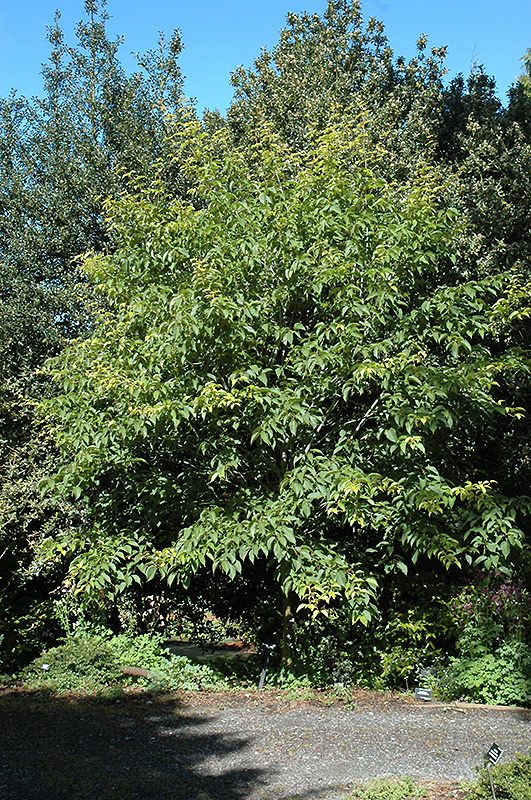* This is a "special order" plant - contact store for details
Height: 25 feet
Spread: 20 feet
Sunlight:
![]()
![]()
Hardiness Zone: 5
Other Names: Father David's Maple, Pere David's Maple
Description:
This cultivar's unique leaf shape, combined with the tree's naturally beautiful structure and color make it an excellent choice for the garden as a focal point; a favorite for its incredible yellow orange and red fall color
Ornamental Features
Snakebark Maple is primarily valued in the landscape for its ornamental upright and spreading habit of growth. It has attractive green deciduous foliage. The oval leaves are highly ornamental and turn outstanding shades of yellow, orange and red in the fall. It produces tan samaras from early to mid fall. The furrowed grayish green bark is extremely showy and adds significant winter interest.
Landscape Attributes
Snakebark Maple is a multi-stemmed deciduous tree with an upright spreading habit of growth. It lends an extremely fine and delicate texture to the landscape composition which can make it a great accent feature on this basis alone.
This is a relatively low maintenance tree, and should only be pruned in summer after the leaves have fully developed, as it may 'bleed' sap if pruned in late winter or early spring. It has no significant negative characteristics.
Snakebark Maple is recommended for the following landscape applications;
- Accent
- Shade
- Mass Planting
Planting & Growing
Snakebark Maple will grow to be about 25 feet tall at maturity, with a spread of 20 feet. It has a low canopy with a typical clearance of 4 feet from the ground, and is suitable for planting under power lines. It grows at a slow rate, and under ideal conditions can be expected to live for 80 years or more.
This tree does best in full sun to partial shade. It prefers to grow in average to moist conditions, and shouldn't be allowed to dry out. It is not particular as to soil pH, but grows best in rich soils. It is somewhat tolerant of urban pollution, and will benefit from being planted in a relatively sheltered location. Consider applying a thick mulch around the root zone in winter to protect it in exposed locations or colder microclimates. This species is not originally from North America.
* This is a "special order" plant - contact store for details

